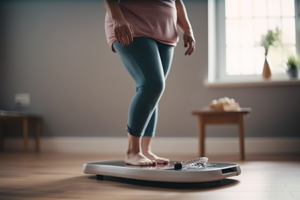
How many times have you witnessed unintentional weight loss in your dialysis patients? Unfortunately, this is a common occurrence that is frequently overlooked and undertreated, especially in patients who are considered obese.
I can’t tell you how many times, when I was working in dialysis clinics, nephrologists or mid-level providers discounted unintentional weight loss
of an obese patient because, after all, the patient could stand to lose a few pounds. This is a very dangerous stance.
Unintentional weight loss for any ESRD patient is something to be investigated further to help prevent more serious implications. Specifically for obese patients, there is new research that outlines the “obesity paradox” which indicates that patients with moderate obesity (BMI of 30-<40) actually have better mortality outcomes than those with BMIs <30 thus showing the importance of addressing unintentional weight loss in patients with all body sizes.
Unintentional weight loss can be an early indicator of malnutrition and often precedes a drop in albumin. As the body breaks itself down to make up for the lack of energy due to an insufficient diet, a process known as catabolism , it frees enough amino acids to allow protein synthesis to continue. But of course, this can only go on for so long. As other indicators of malnutrition surface, such as muscle wasting and hand-grip strength, the risk for hospitalization
and mortality increases.
If you have worked in dialysis for any length of time, you are likely familiar with the term protein energy wasting (PEW). This term was introduced in 2007 by the International Society of Renal Nutrition and Metabolism and is defined as “a state of nutritional and metabolic derangements in patients with chronic kidney disease (CKD) and end-stage renal disease (ESRD) characterized by simultaneous loss of systemic body protein and energy stores”. While not all patients who experience unintentional weight loss may be experiencing PEW, it is important that the renal dietitian assess all patients to mitigate PEW
and its implications to the patients’ health.
Some ways to ensure adequate nutritional assessment include:
- Monitoring weight trends; sometimes major weight loss can get missed because dialysis patients are weighed in kilograms not pounds.
- Completing a Subjective Global Assessment (we have an SGA form and training video found on our clinician portal-see Click Here) ; while this assesses weight it also assesses other components of malnutrition to help the dietitian see the bigger picture of what may be going on with the patient
- Completing a Malnutrition Inflammation Assessment (MIS); similar to the SGA, this assesses more than just weight loss to help get a broader idea
of malnutrition in dialysis patients - Monitor lab values; instead of just focusing on albumin, also pay attention to:
- CRP levels, a marker of inflammation which can impact appetite, PEW and body size
- nPCR levels, another marker of protein intake, to ensure patients are consuming adequate protein by mouth
- Micronutrient levels that could indicate poor oral intake (phos, K+ etc)
After properly identifying patients who are experiencing unintentional weight loss and are at risk for malnutrition and PEW, it is important to address
the cause. We know that malnutrition in ESRD patients is multi-factorial. We know that ESRD patients are hyper-metabolic which initiates catabolism,
but in addition to that many of these patients are uremic, dealing with depression or anxiety from their chronic health conditions, food insecure, lacking social support, living in poverty, and struggling to eat balanced meals within the confines of the diet they are supposed to be adhering to. All these issues
can create barriers to eating enough calories and sources of high biological value protein to sustain adequate nutrition.
So, how do you help these patients at risk for malnutrition? Well, it’s just as multi-factorial:
- Educate patients on the importance of compliance to treatment to reduce uremia. Uremia can also affect cognition which also affects interpretation and memory of nutrition education
- Utilize your social worker to help with access to food, government assistance, and with resources for mental/emotional health
- If possible, speak with the patient’s family/friends to get their support in helping with adequate food intake
- Nutrition education on how to get enough calories/protein on a budget
- Enroll the patient in your facility’s oral nutrition supplement program
- Give patients samples of oral nutrition supplements to take home
- See if your patient’s insurance will cover IDPN or IPN therapies as a non-invasive way to supplement protein, lipids and extra calories
Even though malnutrition can be challenging, dietitians and other healthcare providers have access to a multitude of tools to assess and support patients
on dialysis. Looking for early signs of malnutrition, including unintentional weight loss, is key to making nutrition corrections early to improve health and quality of life-related outcomes.
For more resources on boosting protein and calorie intake and more, visit our Clinician Portal at pcacorp.com
We thank our guest blogger Sarah Voegtle, MS, RD, LDN, for sharing her knowledge and writing this blog post!

